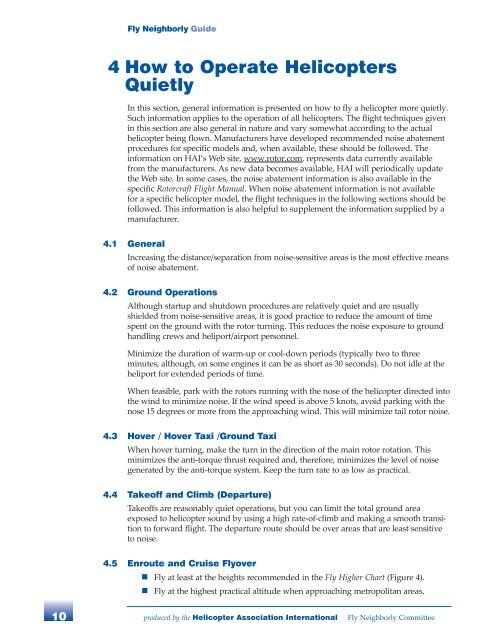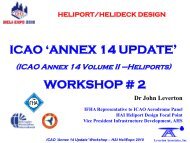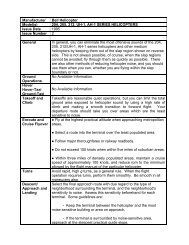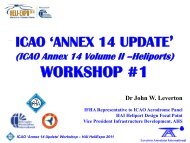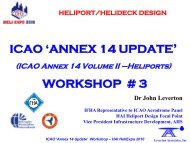Fly Neighborly Guide - Helicopter Association International
Fly Neighborly Guide - Helicopter Association International
Fly Neighborly Guide - Helicopter Association International
You also want an ePaper? Increase the reach of your titles
YUMPU automatically turns print PDFs into web optimized ePapers that Google loves.
<strong>Fly</strong> <strong>Neighborly</strong> <strong>Guide</strong>4 How to Operate <strong>Helicopter</strong>s Quietly4 How to Operate <strong>Helicopter</strong>sQuietlyIn this section, general information is presented on how to fly a helicopter more quietly.Such information applies to the operation of all helicopters. The flight techniques givenin this section are also general in nature and vary somewhat according to the actualhelicopter being flown. Manufacturers have developed recommended noise abatementprocedures for specific models and, when available, these should be followed. Theinformation on HAI’s Web site, www.rotor.com, represents data currently availablefrom the manufacturers. As new data becomes available, HAI will periodically updatethe Web site. In some cases, the noise abatement information is also available in thespecific Rotorcraft Flight Manual. When noise abatement information is not availablefor a specific helicopter model, the flight techniques in the following sections should befollowed. This information is also helpful to supplement the information supplied by amanufacturer.4.1 GeneralIncreasing the distance/separation from noise-sensitive areas is the most effective meansof noise abatement.4.2 Ground OperationsAlthough startup and shutdown procedures are relatively quiet and are usuallyshielded from noise-sensitive areas, it is good practice to reduce the amount of timespent on the ground with the rotor turning. This reduces the noise exposure to groundhandling crews and heliport/airport personnel.Minimize the duration of warm-up or cool-down periods (typically two to threeminutes, although, on some engines it can be as short as 30 seconds). Do not idle at theheliport for extended periods of time.When feasible, park with the rotors running with the nose of the helicopter directed intothe wind to minimize noise. If the wind speed is above 5 knots, avoid parking with thenose 15 degrees or more from the approaching wind. This will minimize tail rotor noise.4.3 Hover / Hover Taxi /Ground TaxiWhen hover turning, make the turn in the direction of the main rotor rotation. Thisminimizes the anti-torque thrust required and, therefore, minimizes the level of noisegenerated by the anti-torque system. Keep the turn rate to as low as practical.4.4 Takeoff and Climb (Departure)Takeoffs are reasonably quiet operations, but you can limit the total ground areaexposed to helicopter sound by using a high rate-of-climb and making a smooth transitionto forward flight. The departure route should be over areas that are least sensitiveto noise.4.5 Enroute and Cruise <strong>Fly</strong>overn <strong>Fly</strong> at least at the heights recommended in the <strong>Fly</strong> Higher Chart (Figure 4).n <strong>Fly</strong> at the highest practical altitude when approaching metropolitan areas.10produced by the <strong>Helicopter</strong> <strong>Association</strong> <strong>International</strong> n <strong>Fly</strong> <strong>Neighborly</strong> Committee


